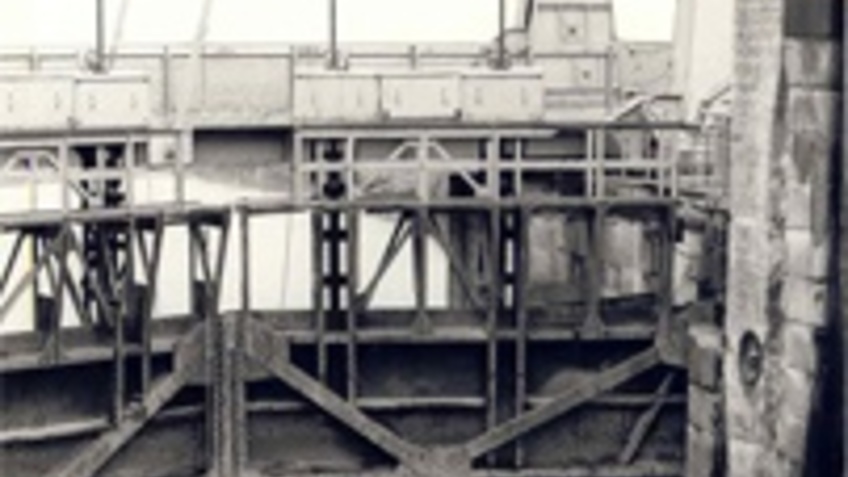Old Lune lock and New Lune Floodgate
The small River Lune, a tributary of the Weser, was used for navigation from earliest times. Agricultural products and bricks were the most common cargoes. The mouth of the river was not enclosed by dykes until relatively late. This made navigation possible irrespective of tides. But the gap was not closed until 1608, when a dyke was built, combined with a floodgate and a lock. This installation was moved southward in 1754 and was replaced there by a stone structure in 1848.
The construction of the New Lune Floodgate has a lot to do with the extension of the fishery port area in Geestemünde (the southern part of modern Bremerhaven), conducted by the Prussian state. The construction of the fishery port double lock (1921 to 1925), the fortification of the Geeste mouth (1921 to 1925) and the lock entrance (1922 to 1925) and Basin II (1926 to 1926) should also be mentioned in this context.
Additionally, a sea dyke was added, extending from the southern breakwater at the mouth of the River Geeste to Luneplate Island. The whole fishery port area was thus protected against inundations; a branch of the Weser River was cut off, the mouth of the Lune River moved again. So a new floodgate to facilitate the drainage of that area had to be installed. This New Lune Floodgate was completed in 1926, replacing the installation of 1848, the latter being closed in 1927 and pulled down ten years later.
The new floodgate was ten metres wide; an original catwalk was replaced by a swing-bridge from 1964 to 1965. A new bucket elevator took over the function of the floodgate in 1987. The floodgate was removed when the dyke was heightened from 6.40 metres to 7.80 metres in 2004 to 2005.

